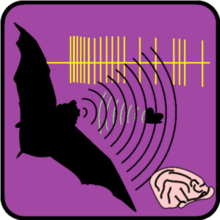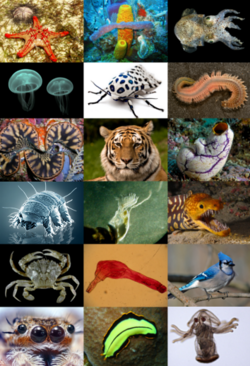神经行为学
神经行为学(Neuroethology),名称源自希腊文νεῦρον(神经)与ἦθος(行为),是通过演化与比较等方法对动物行为及其神经系统机制进行研究的学科。[1][2][3]它是行为神经科学的一门交叉学科分支,目的是了解中枢神经系统如何将刺激转化为自然行为。例如,蝙蝠的听觉系统是如何将声音的声学性质转化以进行回聲定位的。[4]神经行为学家希望通过对于动物的特殊行为的研究得到神经系统的普遍规律。

| 動物學系列 |
| 動物學分支 |
|
人类学 · 人與動物關係學 |
| 歷史 |
正如学科名称所表示的那样,这门学科是神经科学与行为学的综合。与神经科学的其他分支相比,神经行为学的一个中心主题是注重于对自然行为的研究。其中自然行为是指源自自然选择过程的行为(如求偶、飞行、行走、躲避掠食者等),而非处于疾病状态的行为,或特别是在实验室条件下的任务行为。
历史
编辑神经行为学的领域欠它的存在的一部分,建立动物行为学的是动物学内部的独特的学科。虽然动物的行为已经早在亚里士多德(公元前384-342)的时代就曾进行了研究,但直到二十世纪早期,动物行为学才终于成为从自然科学(一个严格的描述领域)和生态学区分开来的一门学科。这背后的新的区别主要的催化剂是康拉德·洛伦兹和尼古拉斯·廷贝亨的研究和著作。
模式系统
编辑参阅
编辑注释
编辑- ^ Hoyle, G. (1984) The scope of Neuroethology. The Behavioral and Brain Sciences. 7:367-412.
- ^ Ewert, P. (1980) Neuroethology. Springer-Verlag. New York.
- ^ Camhi, J. (1984) Neuroethology. Sinauer. Sunderland Mass.
- ^ Suga, N. (1989). "Principles of auditory information-processing derived from neuroethology." J Exp Biol 146: 277-86.
参考文献
编辑- Beer D., Randall, Roy E. Ritzmann, Thomas McKenna (1993) Biological neural networks in invertebrate neuroethology and robotics. Boston : Academic Press.
- Camhi, J.M. (1984) Neuroethology: Nerve cells and the Natural behavior of Animals, Sinauer Associates.
- Carew, T.J. (2000) Feature analysis in Toads. Behavioral Neurobiology, Sunderland, MA: Sinauer, pp. 95–119.
- Carew, T.J. (2000) Behavioral neurobiology: The Cellular Organization of Natural Behavior, Sinauer Associates.
- Ewert, J.-P. (1974) The neural basis of visually guided behavior. Scientific American 230(3):34-42
- Ewert J.-P. (2004) Motion perception shapes the visual world of amphibians. In: Prete F.R. (Ed.) Complex Worlds from Simpler Nervous Systems. Cambridge, MA, MIT Press, pp. 117–160
- Hoyle, G. (1984) The scope of Neuroethology. Behavioural Brain Science 7:367-412. Graham Hoyle put forth a rather narrow definition of the goals and subject matter of neuroethology and links the field to the field of ethology. This is followed by commentaries from many prominent neuroethologists. It makes for fascinating reading.
- Metzner, W. (1993) The Jamming avoidance response in Eigenmannia is controlled by two separate motor pathways. The Journal of Neuroscience. 13(5):1862-1878
- Pfluger, H.-J. and R. Menzel (1999) Neuroethology, its roots and future. J Comp Physiol A 185:389-392.
- Zupanc, G.K.H. (2004) Behavioral Neurobiology: An Integrative Approach. Oxford University Press: Oxford, UK.
